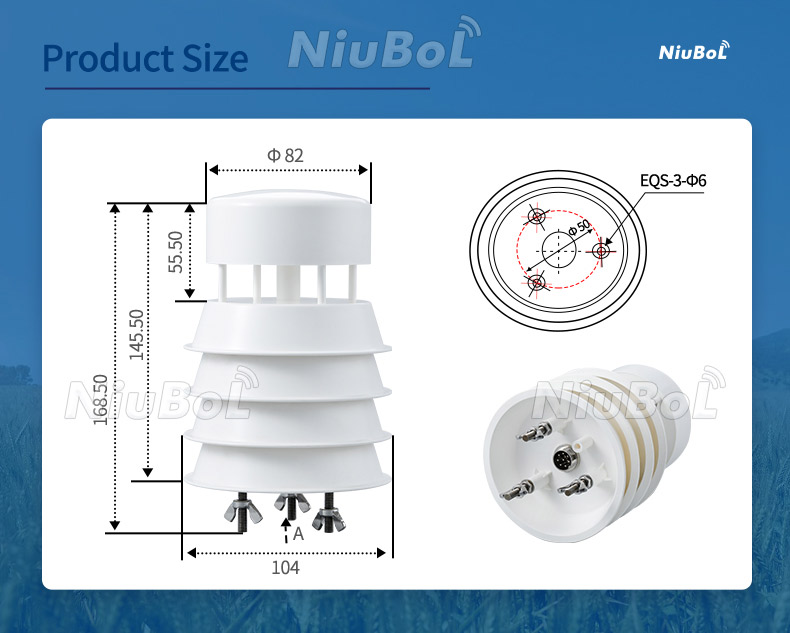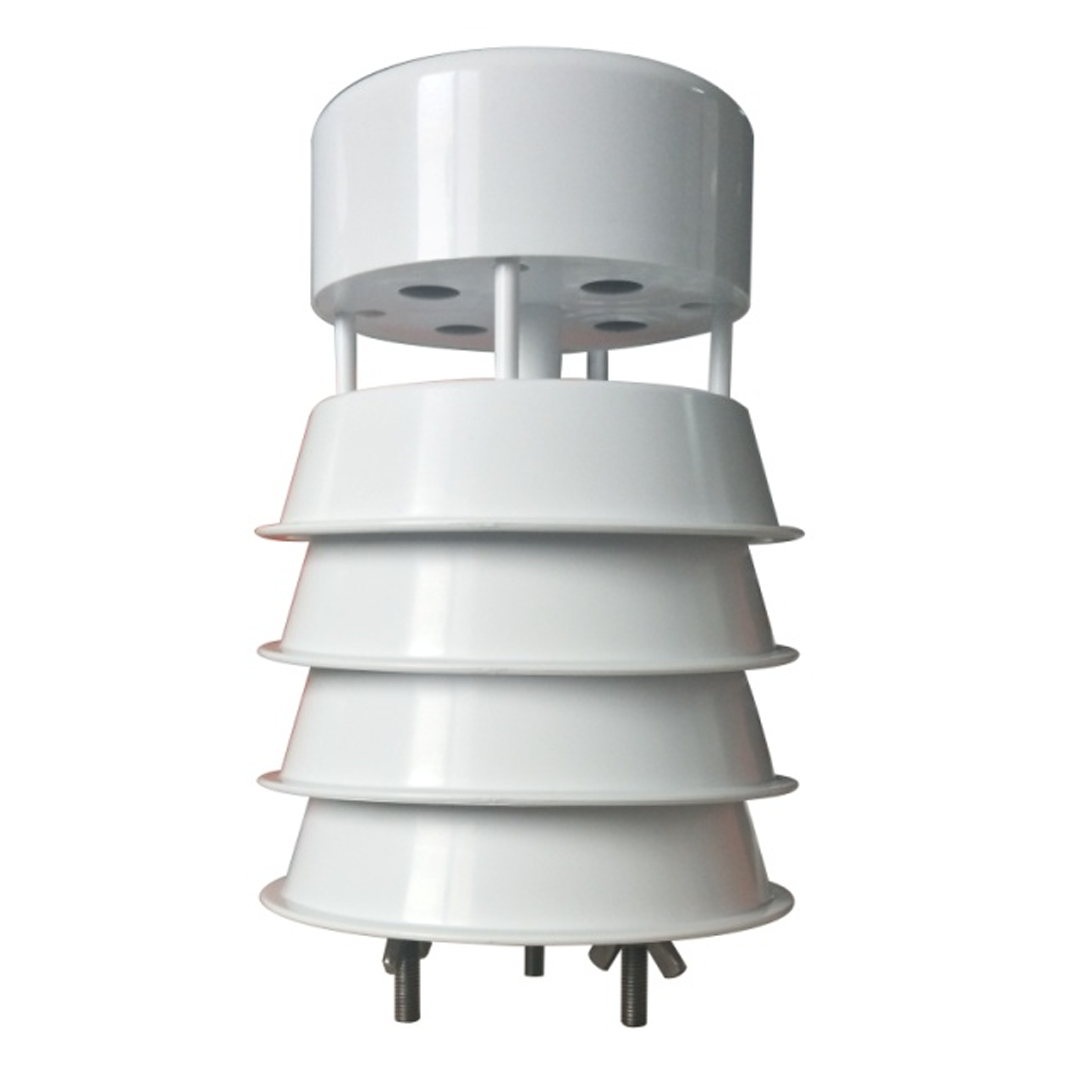

— Products —
 Consumer hotline +8618073152920
Consumer hotline +8618073152920 WhatsApp:+8615367865107
Address:Room 102, District D, Houhu Industrial Park, Yuelu District, Changsha City, Hunan Province, China
All products
Ultrasonic Wind Speed & Direction Sensor is an integrated ultrasonic wind speed and direction sensor that is compact, highly integrated, lightweight and rugged. With no moving parts, it requires no on-site maintenance or calibration, and is capable of accurately and quickly detecting wind speed and direction values in the field environment. The high-strength structural design enables it to maintain accurate measurement in harsh climatic environments, and is widely used in met···
Tel/WhatsApp:+8615367865107
Email:Arvin@niubol.com +Nearly 100 partner company in more than 68 countries. We are committed to providing high-quality, practical products to meet your needs and help you solve problems.Product Details
Welcome to use our Ultrasonic Wind Speed & Direction Sensor. It is a miniature, fully digitalized sensor that integrates ultrasonic wind speed and direction measurement in a compact, highly integrated, lightweight and rugged package. With no moving parts, it requires no on-site maintenance or calibration, and is capable of accurately and quickly detecting wind speed and direction values in the field environment. The high-strength structural design enables it to maintain accurate measurement in harsh climatic environments, and is widely used in meteorology, environment, environmental protection, transportation, smart city, industrial inspection and other fields.
| Wind speed measurement range: | 0~40m/s |
| Wind direction measurement range: | 0~360° |
| Wind speed measurement accuracy: | Low wind speed: ±0.5m/s Low wind speed: ±3° High wind speed: ±1m/s High wind speed: ±5° |
| Wind speed measurement resolution: | 0.01m/s; |
| Wind direction measurement resolution: | 1° |
| Power supply: | DC12V |
| Communication output: | RS485 |
| Baud rate: | 9600 |
| Communication protocol: | MODBUS communication protocol |
| Shell material: | engineering plastic |
| Operating temperature: | -40°C-70°C |
| Storage temperature: | -50°C – 80°C |
| Working humidity: | 0-100%RH |
| Appearance size/weight: | φ90 X 140mm/0.6Kg |
| Protection class: | IP65 |
| Overall power consumption: | 0.2W |
1. Fully digitalized measurement: Adopting ultrasonic technology to realize fully digitalized measurement of wind speed and direction, with high accuracy and fast response speed.
2. No Moving Parts: Designed with no moving parts, it avoids accuracy degradation and malfunction due to mechanical wear, and improves the reliability and service life of the sensor.
3. High-strength structural design: Adopting high-strength structural design, it can maintain accurate measurement in harsh climatic environments and is suitable for various complex environments.
4. Easy to install and maintain: compact size, light weight, easy to install; no need for on-site maintenance and calibration, reducing the cost of use.
5. Multiple communication modes: supports RS485 communication and adopts MODBUS communication protocol, which is convenient to integrate with various monitoring systems.

1. Meteorological monitoring: real-time monitoring of wind speed and direction, providing accurate data for meteorological forecasting.
2. Environmental monitoring: monitoring air quality, wind speed and direction and other environmental parameters, providing scientific basis for environmental protection.
3. Transportation: Provide wind speed and direction information for highways, railroads, aviation and other transportation fields to ensure driving safety.
4. Smart city: as an important part of the smart city, it provides wind speed and wind direction data support for city management and planning.
5. Industrial Inspection: In wind power generation, shipbuilding and other industrial fields, it is used to monitor wind speed and wind direction to optimize the production process.
1. High-precision Measurement: Adopting advanced ultrasonic technology to realize high-precision measurement to meet the needs of various application scenarios. 2. High Reliability: No need to use ultrasonic technology to measure wind speed and direction.
2. High Reliability: No moving parts design avoids mechanical failure and improves the reliability and service life of the sensor.
3. Easy to integrate: support RS485 communication and MODBUS communication protocol, convenient to integrate with various monitoring systems to realize remote monitoring and data management.
4. Strong adaptability: high-strength structural design, suitable for a variety of harsh climatic environments, to ensure the accuracy and stability of the measurement results.
5. Low Power Consumption: The overall low power consumption reduces the cost of use and is also conducive to environmental protection and energy saving.
1. Avoid interference: Ensure the sensor is not interfered by other operating equipment, such as radio/radar transmitters, ship engines, motors, etc.
2. Keep distance: Do not install on the same plane with any radar scanning device, keep at least 2M distance; it is also recommended to keep a certain distance from the surrounding radio receiving antennas.
3. Use recommended cables: Use the cables recommended by our company to ensure the stability and reliability of signal transmission.
4. Correct wiring: If the cable needs to be connected after it has been cut, please follow the installation guide instructions to ensure that the cable shield is correctly connected to avoid creating a ground loop.
5. Continuous power supply: Ensure continuous power supply during operation of the device to avoid loss of measurement data or damage to the device due to power interruption.
6. Avoid flocculation effects: Avoid the effects of flocculation from surrounding buildings (e.g. trees, utility poles, tall buildings, etc.) on the accuracy of the ultrasonic wind speed and direction meter.
- Ultrasonic wind speed sensor: Measure wind speed by using ultrasonic time difference method. By sending and receiving ultrasonic signals, the wind speed is calculated based on the time difference of ultrasonic wave propagation in the air. Because the sound speed is affected by the airflow speed in the direction of the wind, the wind speed and direction can be accurately calculated.
- Mechanical wind speed sensors: rely on physical rotating parts. The wind cup is rotated by the wind and its rotational speed is proportional to the wind speed. Wind speed is determined by measuring the rotational speed of the wind cup, which usually requires a mechanical drive and an electronic counter to convert it into an electrical signal.
- Ultrasonic sensor: no moving parts, consists of multiple ultrasonic probes, simple structure, low maintenance requirements.
- Mechanical Sensor: Contains rotating wind cups or propellers, subject to mechanical wear and tear, and may require periodic maintenance and calibration.

- Accuracy and Response Speed: Ultrasonic sensors have fast response speeds, no start-up wind speed limitations, and high measurement accuracy, especially at low wind speeds and gusts. Mechanical sensors may not start at low wind speeds and have inertia, resulting in a slower response time.
- Environmental adaptability: ultrasonic sensors are not affected by bad weather such as wind, sand, rain and snow, making them suitable for long-term outdoor use. Mechanical sensors, on the other hand, can be affected by snow, ice or dust.
- Maintenance and Durability: Ultrasonic sensors are more durable and low maintenance due to no mechanical wear and tear. Mechanical sensors require regular inspections and possible cleaning, lubrication or replacement of parts.
- Ultrasonic sensors: widely used in applications that require high accuracy and low maintenance, such as weather stations, scientific research, and aviation.
- Mechanical sensors: due to their lower cost and simple structure, they may be more suitable for applications with limited budgets and better maintenance conditions, such as agricultural monitoring and small weather stations.
Which type of wind sensor to choose depends on the specific application needs, including the required accuracy, environmental conditions, maintenance costs, and budget. Ultrasonic sensors, while the initial investment may be higher, may be more cost-effective in the long run due to their high accuracy and low maintenance requirements.
Conclusion
Choosing ultrasonic wind speed and direction sensors is choosing accuracy, efficiency and longevity. It is not only an innovation in technology, but also a powerful assistant in your research and management. Experience it now and start your journey to accurate measurement. We are committed to providing you with high-quality products and professional services, and look forward to working with you to create a better future.
NBL-W-21MUWS-Ultrasonic-wind-speed-and-direction-sensor-instruction-manual.pdf
Sensors & Weather Stations Catalog
Agriculture Sensors and Weather Stations Catalog-NiuBoL.pdf
Weather Stations Catalog-NiuBoL.pdf
Related recommendations
 Multi-Depth Soil Sensor RS485
Multi-Depth Soil Sensor RS485 TDR Soil Moisture Sensor
TDR Soil Moisture Sensor Pyranometer Solar Radiation Sensors
Pyranometer Solar Radiation Sensors Soil ph sensor
Soil ph sensor Tipping Bucket Rain Gauge
Tipping Bucket Rain Gauge Air Temperature and Humidity Sensor
Air Temperature and Humidity Sensor
Screenshot, WhatsApp to identify the QR code
WhatsApp number:+8615367865107
(Click on WhatsApp to copy and add friends)
